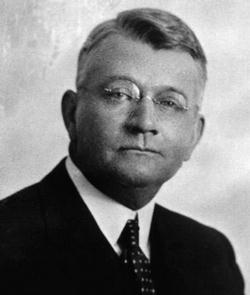It is strange to think that one of modern economics most formative theories wouldn’t have happened were it not for a book about managing tea rooms. Peter Harrington has recently acquired the curious volume Tea Room and Cafeteria Management by the American economic theorist R. N. Elliott, the first book written by the man behind Elliott’s Wave theory.
Ralph Nelson Elliott began his career as an accountant working in executive positions for railway companies, primarily in Central America and Mexico. When civil unrest broke out in Mexico during the 1920s, he was forced to return to the United States. He settled in New York City with his wife and it was there he began what became a successful consulting business.
In 1924, Elliott was selected to be the Chief Accountant to Nicaragua in 1924, which at the time was under American rule. Not long after this appointment, Elliott wrote two books, Tea Room and Cafeteria Management and The Future of Latin America.
In writing Tea Room and Cafeteria Management, Elliott spent many hours studying the management of tea rooms, leading to him becoming a familiar figure within the industry. It was with similar vigour that Elliott was to approach the subject which later gained him fame within the economics community.
After being forced to retire early due to contracting a severe intestinal illness in Central America, Elliott found himself returning to America at the age of 58. It was the early 1930s, and in the wake of the Wall Street Crash people were searching for answers. In his retirement Elliott began to meticulously study stock market data, going back 75 years with records which relayed changes in half-hour increments.

The result of this intense period of study was Elliott’s Wave theory; a belief that the natural laws of the stock market could be measured and forecast using fibonacci numbers. Elliott wasn’t providing and cheat trick to keep the market safe, but he was providing a way in which the rises and falls of the market could be foreseen and defended against.
Elliott took his theory to Charles J. Collins of Investment Counsel Inc. in Detroit. Collins had been presented with many other similar theories in recent years but it was only Elliott’s which made sense to him.
On 13th March 1935, with the Dow Jones closing at a low, Elliott sent a telegram to Collins saying that, based on his Wave theory, “ALL AVERAGES ARE MAKING FINAL BOTTOM”. Elliott was right, the 13-month correction was over and the markets began to recover. Having proved his theory accurate, Collins agreed to work with Elliott, and together they wrote The Wave Principle.
It is remarkable that Elliott’s career in writing began with the publication of such an extensive study of the humble tea room, and ended with a theory which was ground-breaking at the time and still hotly debated today.





